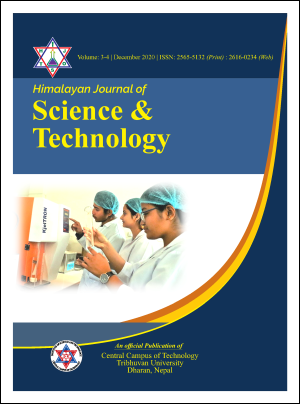Process Optimization of Finger Millet Incorporated Extrudates
DOI:
https://doi.org/10.3126/hijost.v4i0.33870Keywords:
Response Surface Methodology, Single crew extrusion, Millet flour, Water solubility index, Starch digestibilityAbstract
The effects of incorporation of finger millet (Eleusine coracana L.) flour and extrusion conditions on physico-chemical characteristics of corn grit- rice grit-chickpea flour blend expanded extrudates were studied. Response surface methodology was used to study the effects of level of incorporation of millet flour in feed composition (5 to 25 %), feed moisture (12-16%), screw speed (1000-1400 rpm) and extrusion temperature (80–120°C). Single screw extruder was used for the experiments. The level of millet flour incorporation had significant effect on water solubility index (p<0.05), water absorption index (p<0.05) and starch digestibility (p<0.001). Feed moisture had significant effect on water solubility index (p<0.001) and water absorption index (p<0.05). Extrusion temperature had significant effect on water solubility index (p<0.001), water absorption index (p<0.05) and starch digestibility (p<0.05). Screw speed had significant effect on water solubility index (p<0.001) and water absorption index (p<0.05). Numerical optimization study predicted 106.8 °C of extrusion temperature, 1253 rpm of screw speed, 12.67 % of feed moisture, and 22.8 % of millet flour as optimum conditions to produce acceptable extrudates from the feed composite containing millet flour.
Downloads
Downloads
Published
How to Cite
Issue
Section
License
© Himalayan Journal of Science and Technology
All rights reserved.




